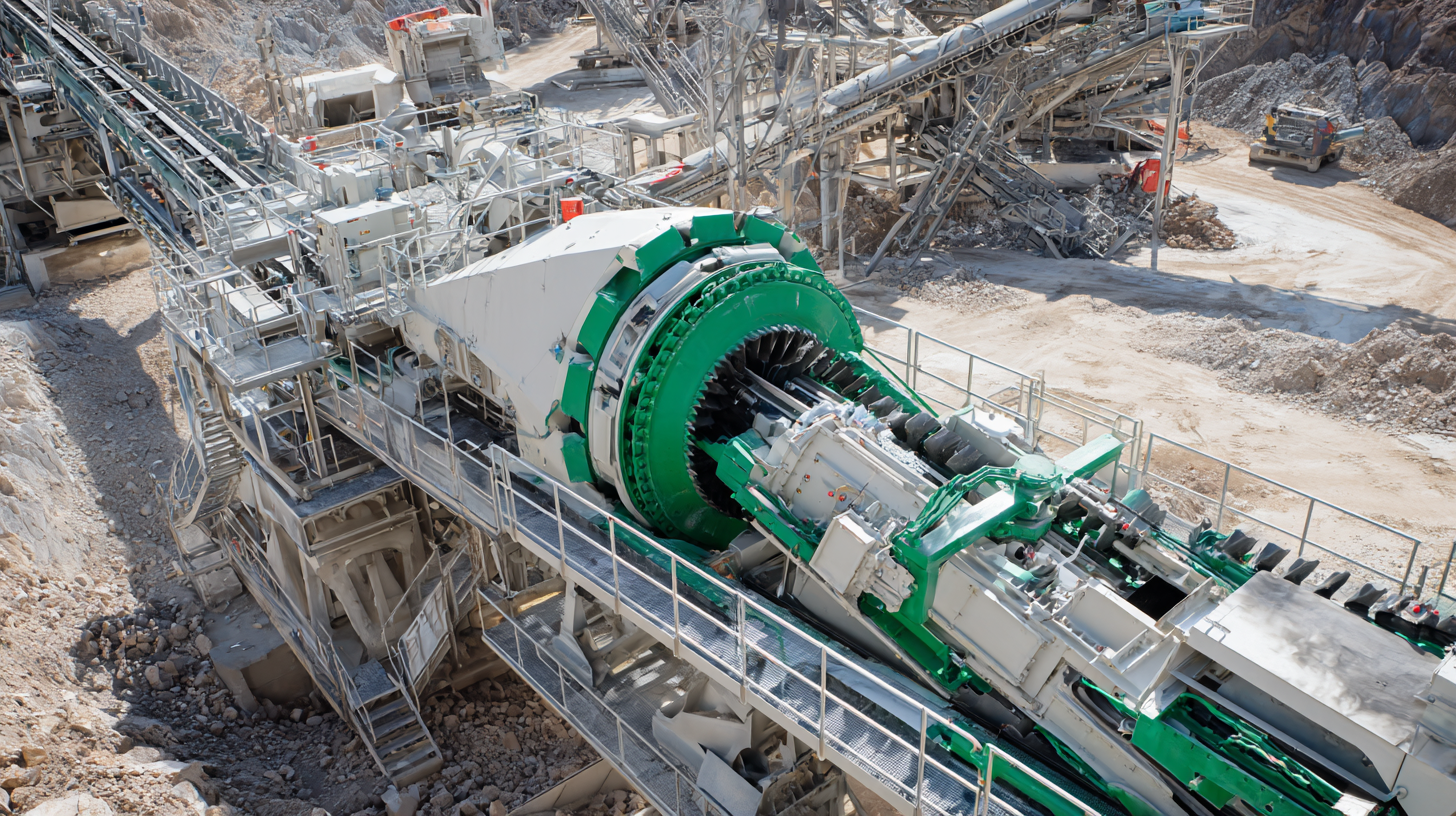In the world of mining and construction, the Jaw Crusher is an indispensable tool that plays a crucial role in the initial stages of material processing. Optimizing this powerful machine not only ensures maximum efficiency but also extends its lifespan, which can significantly reduce operational costs over time. A well-maintained Jaw Crusher can dramatically enhance productivity and minimize downtime caused by mechanical failures.

This guide aims to provide valuable insights into practical strategies and techniques for optimizing your Jaw Crusher, exploring key elements such as proper maintenance routines, correct operational techniques, and efficiency-enhancing modifications. By implementing these best practices, you'll be equipped to unlock the full potential of your Jaw Crusher, ensuring it operates at peak performance and continues to serve your business effectively for years to come.
When it comes to enhancing the performance of a jaw crusher, understanding the key factors that influence its efficiency and longevity is crucial. One essential factor is the material composition and its hardness. According to a report by the Mining and Materials Engineering Association, materials with a Mohs hardness greater than 5 can significantly increase the wear on crusher components, leading to more frequent replacements and downtime, which ultimately affects productivity.
Another critical aspect is the optimization of the crushing chamber design. A study conducted by the International Journal of Engineering Research indicated that a well-designed jaw configuration can boost the crusher's throughput by up to 20%. Additionally, maintaining the right jaw alignment and ensuring proper settings according to the manufacturer's specifications plays a pivotal role in minimizing energy consumption and wear rates. Data from the Aggregate and Construction Research Institute suggests that regularly scheduled maintenance can extend the lifespan of jaw crushers by as much as 30%, underlining the importance of routine checks and adjustments in achieving optimal performance.
| Factor | Description | Impact on Performance | Optimization Tips |
|---|---|---|---|
| Material Selection | Choosing the right type of material for crushing | Affects wear and tear and overall crushing efficiency | Select materials with appropriate hardness and size |
| Crusher Settings | Adjustments made to the crusher's operational parameters | Influences the size of the output material | Regularly check and adjust the settings based on material |
| Maintenance Schedule | Planned maintenance for components of the crusher | Prevents breakdowns and prolongs the lifespan | Implement a routine maintenance checklist |
| Feed Material Size | Size of the material before entering the crusher | Too large can cause blockages and too small reduces efficiency | Use a screening process to ensure proper material size |
| Lubrication | Proper lubrication of moving parts | Reduces friction and prevents overheating | Follow the manufacturer's lubrication schedule |
When it comes to maximizing the lifespan and efficiency of your jaw crusher, adhering to essential maintenance tips is crucial. According to the National Stone, Sand & Gravel Association, regular maintenance can extend a jaw crusher's operational life by as much as 30% to 50%. One of the fundamental practices involves routine lubrication of moving parts, which helps mitigate wear and tear. Utilizing high-quality lubricants can significantly reduce friction, thereby enhancing the machine's performance and longevity.

Equally important is the regular inspection for wear and tear on critical components such as the jaw plates and bearings. The Journal of Engineering and Technology suggests that replacing worn parts on time can lead to an incredible 20% improvement in efficiency. Moreover, performing periodic adjustments to ensure the correct closed-side setting (CSS) is vital, as it optimizes the crushing process and minimizes unnecessary strain on the machine. By implementing these maintenance strategies, equipment owners can not only enhance the operational efficiency of their jaw crushers but also significantly reduce unexpected downtimes and costly repairs.
To maximize the efficiency and longevity of your jaw crusher, it's crucial to make the right adjustments. These modifications can have a significant impact on performance and throughput. One of the first adjustments to consider is the closed-side setting (CSS). By fine-tuning the CSS, operators can achieve optimal material size and reduce unnecessary wear on the crusher's components. This not only enhances productivity but also prolongs the machine's life.

Another key adjustment is the toggle plate, which plays an essential role in maintaining the jaw’s stability and strength. Ensuring the toggle plate is correctly set helps prevent excessive movement and vibrations that can lead to operational inefficiencies. Regular inspections and replacement when worn can safeguard against premature failure.
Lastly, monitoring and adjusting the crusher's speed is critical. Maintaining the right RPM can enhance material handling and maximize output. Increasing or decreasing the speed based on the material characteristics and flow can significantly impact the overall efficiency. By implementing these adjustments, operators can optimize their jaw crushers for longer service life and improved performance.
Operating a jaw crusher safely is crucial for ensuring not only maximum efficiency but also the longevity of the equipment. As indicated by the Aggregate Producers Association, around 70% of all crushing equipment failures result from improper operation and maintenance routines. To mitigate such risks, it is essential to implement best practices that focus on both safety and efficiency.
One key practice is regular inspection and maintenance. Daily checks should include looking for wear on the jaw plates, monitoring fluid levels, and ensuring all safety guards are in place. According to a 2022 Equipment World report, regular maintenance can increase equipment lifespan by up to 30%. Furthermore, training operators on the importance of these checks can drastically reduce the chances of malfunctions.
Another critical aspect is proper feeding techniques. The optimum feed size and uniformity can greatly improve crusher performance. Research from the Material Handling Institute suggests that maintaining a consistent feed can enhance throughput by as much as 25%. Additionally, operators should always be mindful of avoiding overloading the jaw crusher, as excessive material can lead to serious mechanical issues and safety hazards. Engaging in these best practices not only optimizes the crushing process but also creates a safer work environment.
Regular inspections are crucial for preventing jaw crusher failures and ensuring the longevity of your equipment. According to a study by the Aggregate Research Institute, systems that incorporate regular maintenance schedules can reduce downtime by up to 25%, significantly impacting production efficiency. Inspections allow operators to identify wear patterns, check for loose fittings, and ensure that all components are functioning optimally, thus averting catastrophic failures that could lead to expensive repairs or replacements.
Tip: Implement a strict inspection schedule that aligns with your production cycles. Document your findings to track wear and establish a baseline for future evaluations. This proactive approach not only helps in identifying potential problems early but also extends the lifespan of the machinery.
Additionally, regular inspections can help in optimizing performance. Data from the Mining Industry Association indicates that machines maintained on a routine basis can enhance efficiency by 15-20%. By monitoring factors such as the jaws' alignment and the discharge setting, operators can ensure that their jaw crushers are set to work at peak efficiency.
Tip: Utilize diagnostic tools and wear indicators to facilitate thorough inspections, allowing for precise adjustments that promote optimal operation. Recognizing the importance of routine checks is key in maximizing your jaw crusher's productivity and operational life.






